Past climate variability in the Pyrenees
In order to understand the current climate change and to put it in a global context, we must be aware of how the climate evolved in the past. The interactions between the atmosphere, the hydrosphere and the cryosphere operate on longer time-scales than those of instrumental measurements. The study of glacier, river and lake deposits, and related studies, allow us to reconstruct how the climate of the Pyrenees changed in the past.
During the Quaternary (the last 2.6 million years), alternating glacial and interglacial periods sculpted the landscape of the Pyrenees and determined the evolution of its ecosystems, and more recently, of its human communities. Although this series of cold and warm periods affected the whole planet, the glaciers of the Pyrenees reached their maximum expansion 60,000 years ago, not 20,000 years ago as in the rest of Europe, with slight variations between valleys. This was due to the southerly location of the Pyrenean glaciers and the interaction of North Atlantic with subtropical atmospheric and oceanic processes.
Over the last deglaciation period, average temperatures changed by up to 6 ºC, with periods of rapid climate change when they changed by over 1 ºC in just a few decades. In the Holocene (the last 11,700 years) temperature changes were smaller, but there were many alternating wet and dry phases. In the last millennium, there was a particularly dry, warm phase (the Medieval Warm Period or Medieval Climatic Anomaly, 900 - 1,300 CE) which can be considered the most similar period to our own in terms of climate change.
The period was followed by the Little Ice Age, the last cold phase (1,300 - 1,850 CE) before the global warming we are now experiencing. Climate variability over the last 2,000 years is mainly controlled by interactions between atmospheric processes (NAO, the North Atlantic Oscillation; EA, the East Atlantic Oscillation; and SCAND, the Scandinavian Oscillation), changes in ocean currents, solar radiation and volcanic activity. These interactions can also explain regional and temporal humidity and temperature gradients.
Temperatures rose more quickly during the global warming of the 20th century than in the glacial-interglacial transitions and the changes of the Holocene. To put it another way, Earth’s climate is changing faster than it ever has before.
The current climate in the Pyrenees
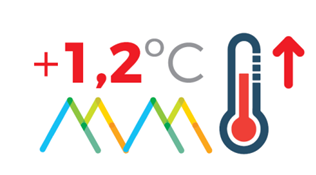
From 1949 to 2010, the average temperature of the Pyrenees clearly rose, although the warming was neither constant nor regular. Negative anomalies predominated in the period up to 1980, with a trend towards cooler temperatures. Beginning in the 1980s this trend was reversed, with positive anomalies systematically increasing until the present day. The trend towards average annual temperature increases over the entire period analysed is positive and statistically significant, with a value of 0.2° C per decade (Figure 1).
This temperature increase over the last 50 years (1949-2010) is found throughout the Pyrenees mountain range, with little difference between the northern and southern slopes, and is more marked in summer (June, July and August).
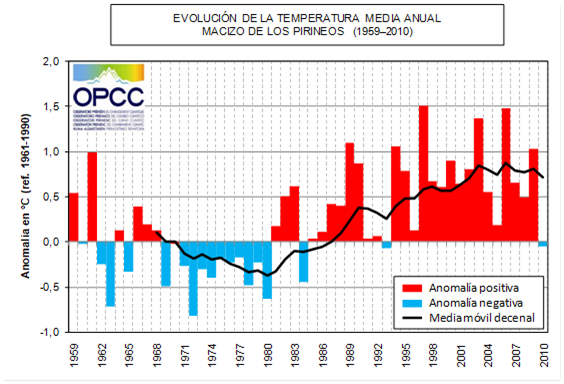
The warmest year in the series was 1997, with an average temperature 1.5° C higher than the average for the period 1961-1990, followed by 2003 and 2006. In contrast, 1972 was the coldest year, 0.8° C below the baseline average, followed by 1963 and 1980.
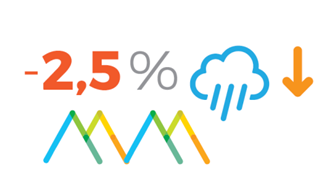
The precipitation figures mainly show decreasing annual volumes, due especially to lower precipitation in winter and summer. The climate indicator for precipitation shows a downward trend of around 2.5% per decade over the last 50 years (according to data for 1949-2010).
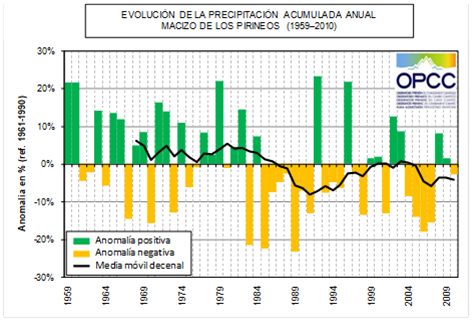
The value of this trend varies widely from year to year, and even between decades. In general, in recent decades dry years have been predominant, with annual precipitation amounts well below the average for the reference period, but interspersed with some very rainy years, with precipitation above the average for the period. In terms of territorial differences, annual precipitation has decreased more on the southern than the northern slopes, although the contrasts are not large. Although the trend to lower precipitation does not present clearly seasonal or statistically significant behaviour, it is slightly more marked in winter and in summer.
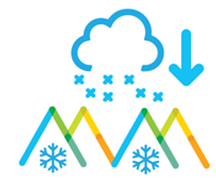
The analysis of changes in snow cover over the last half-century is difficult, given that we lack sufficient continuous and robust historical data. This is because installing and maintaining the instruments to take the necessary measurements becomes more difficult at higher altitudes. However, the series of data from the network of beacons on the south side indicate a statistically significant decrease in snow cover in this sector from 1950 to the present (Figure 3).
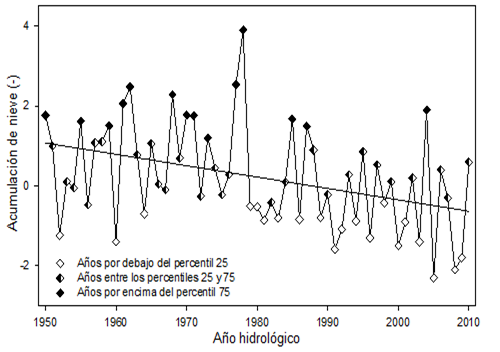
PYRENEAN CLIMATE CHANGE OBSERVATORY
Avenida Nuestra Señora de la Victoria, 8
22.700 - Jaca
Huesca - España
+34 974 36 31 00
info_opcc@ctp.org




